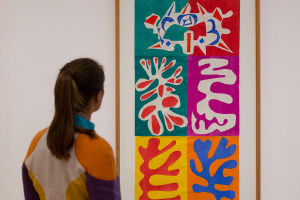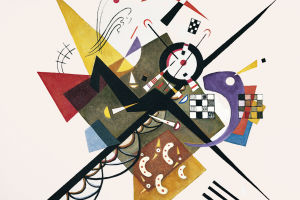Art movements have shaped the course of history, influencing how we see the world, how we express ourselves, and how we interpret reality.
From the classical traditions of Renaissance to the bold avant-garde movements of the 20th century, each art movement reflects its time and culture.
In this article, we will explore some of the most famous art movements, their characteristics, and the profound impact they have had on both art and society.
The Renaissance: A Revival of Classical Ideals
The Renaissance, spanning from the 14th to the 17th century, marked a period of renewed interest in classical antiquity. With its roots in Italy, this movement is often considered the rebirth of Western art and culture.
Renaissance artists sought to revive the classical ideals of harmony, proportion, and balance, applying these principles to humanist ideals. The works of artists like Leonardo da Vinci, Michelangelo, and Raphael were not just visually groundbreaking but also intellectually and philosophically influential.
Renaissance art was deeply tied to the resurgence of scientific inquiry, humanism, and spiritual reform. The use of perspective, accurate human anatomy, and the portrayal of emotion in figures were revolutionary for the time. The impact of Renaissance art extends beyond painting; its principles affected sculpture, architecture, and literature, forever changing how the world viewed the human experience.
Baroque: Drama and Emotion in Art
Emerging in the late 16th century, the Baroque movement is characterized by its use of dramatic lighting, intense emotions, and dynamic compositions. This movement emerged as a response to the austerity of the Renaissance and the spiritual upheaval caused by the Protestant Reformation and the Catholic Counter-Reformation.
The Baroque sought to evoke awe and emotional involvement from the viewer.
Artists like Caravaggio, Peter Paul Rubens, and Rembrandt pushed the boundaries of realism and emotion, using chiaroscuro (the contrast between light and dark) to create depth and intensity in their paintings. The Baroque also expanded beyond painting to include architecture, with grandiose designs such as St. Peter's Basilica in Vatican City.
The movement was deeply intertwined with the power of the clergy and monarchy, often commissioned to reinforce their authority and glorify their power.
Impressionism: A Break from Tradition
In the late 19th century, Impressionism revolutionized the world of painting by breaking away from the traditional academic standards of art. Instead of adhering to strict rules of perspective and realism, artists like Claude Monet, Edgar Degas, and Pierre-Auguste Renoir focused on capturing the fleeting effects of light, color, and atmosphere.
They painted en plein air (outdoors), directly observing nature, and often worked with short, visible brushstrokes to convey movement and the passage of time.
Impressionists sought to capture the momentary sensations of life, creating paintings that were more about perception than precise representation. This style initially faced criticism for its unconventional techniques but eventually became one of the most celebrated movements in Western art history.
Impressionism laid the groundwork for modern art movements and was instrumental in breaking the boundaries of tradition, allowing for greater individual artistic expression.
Cubism: Deconstructing Reality
In the early 20th century, Cubism emerged as a radical departure from traditional art forms. Pioneered by Pablo Picasso and Georges Braque, Cubism sought to depict subjects from multiple angles simultaneously, challenging the traditional notion of perspective.
Rather than painting a subject from a single viewpoint, Cubists fragmented objects and reassembled them on the canvas to present an abstracted, multifaceted reality.
Cubism was more than just a new artistic style; it was a philosophical approach to understanding the nature of reality itself. By showing multiple perspectives in a single image, Cubists invited viewers to reconsider their assumptions about how they perceive the world. This innovative approach had a lasting influence on art, paving the way for movements like Futurism, Surrealism, and abstract art, all of which sought to represent reality in non-traditional ways.
Surrealism: The Exploration of the Unconscious
Surrealism, which emerged in the 1920s, sought to express the unconscious mind and explore the realms of dreams, fantasy, and irrationality.
Inspired by the psychoanalytic theories of Sigmund Freud and Carl Jung, surrealist artists like Salvador Dalí, René Magritte, and Max Ernst used dreamlike imagery and bizarre, illogical scenes to challenge conventional understanding of reality.
By presenting startling, fantastical images that defied logic and reason, surrealist art aimed to free the viewer from the constraints of rational thought and evoke a deeper, more emotional response. Surrealism's impact reached beyond painting and influenced literature, cinema, and even fashion. Its exploration of the subconscious mind remains one of the most powerful legacies of the 20th century in terms of cultural and artistic influence.
Abstract Expressionism: A New Freedom
Abstract Expressionism, which flourished in the post-global era, marked a significant break from both representational and surrealist art. Artists like Franz Kline, Mark Rothko, and Willem de Kooning rejected the idea of creating art based on recognizable forms, instead focusing on expressing inner emotions through color, form, and texture.
This movement was deeply influenced by the emotional turbulence and existential questions of the post-global era. Abstract Expressionism was revolutionary in its use of spontaneous techniques and its embrace of complete freedom of expression. Kline's bold black-and-white gestural paintings, for instance, emphasized dynamic brushwork and movement as a form of emotional release.
This movement laid the foundation for many subsequent contemporary art forms, including Minimalism and Conceptual Art, and continues to influence artists to this day.
Pop Art: Blurring the Line Between High and Low Culture
Pop Art, which emerged in the 1950s, was a response to the growing commercialization and consumer culture of the mid-20th century. Artists like Andy Warhol, Roy Lichtenstein, and Claes Oldenburg used mass media, advertising, and popular culture as their subjects, bringing everyday objects into the realm of high art.
Warhol's iconic Campbell's Soup Cans and Lichtenstein's comic-style paintings challenged the idea of what art should be and made a statement about the power of mass production and media.
Pop Art blurred the boundaries between "high" culture and "low" culture, elevating popular culture to the status of fine art. Its impact is still felt in the art world, as it helped redefine the relationship between art, commerce, and society. Pop Art also helped to democratize art, making it more accessible and reflective of modern, consumer-driven society.
The Legacy of Art Movements
Each of these movements has contributed significantly to the development of modern art, reshaping not only the way artists create but also how art is understood and appreciated. From the emotional depth of the Baroque to the deconstruction of reality in Cubism, each movement has offered a new lens through which to view the world.
Their influence extends far beyond galleries and museums, affecting everything from advertising and design to fashion and film.
In modern art, the fluidity of styles and constant evolution reflect society's ever-changing values and priorities. Today, artists continue to push boundaries, borrowing from these movements while developing new ideas and techniques. Understanding the legacy of these famous art movements allows us to appreciate the innovations of the past while engaging with the dynamic and diverse world of contemporary art.
What is your favorite art movement? How do you think these movements have influenced modern society? Share your thoughts in the comments below!


